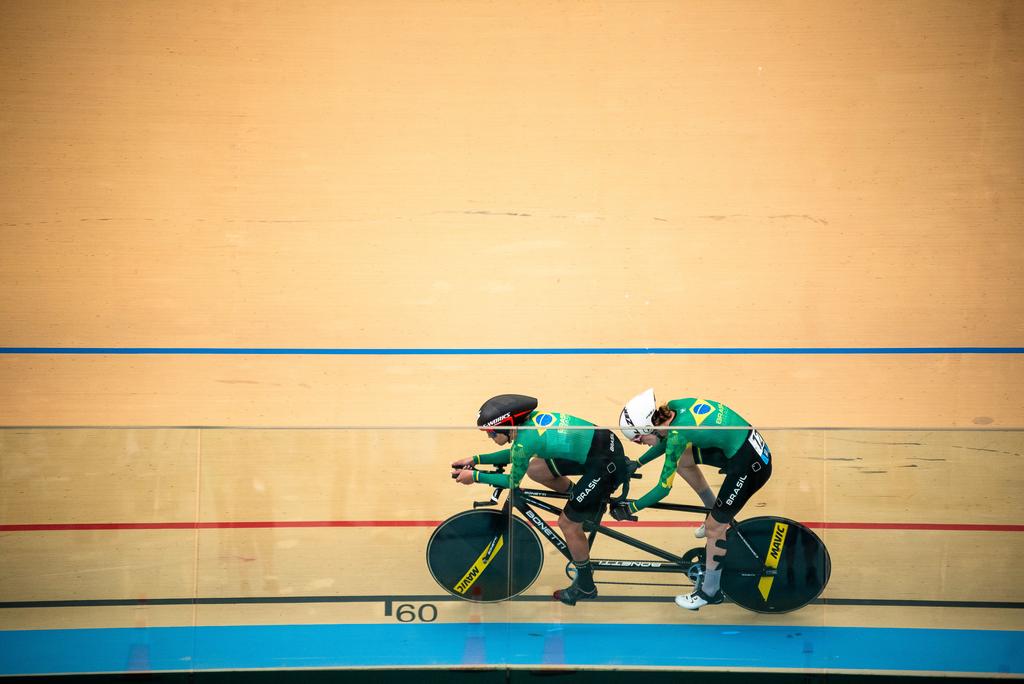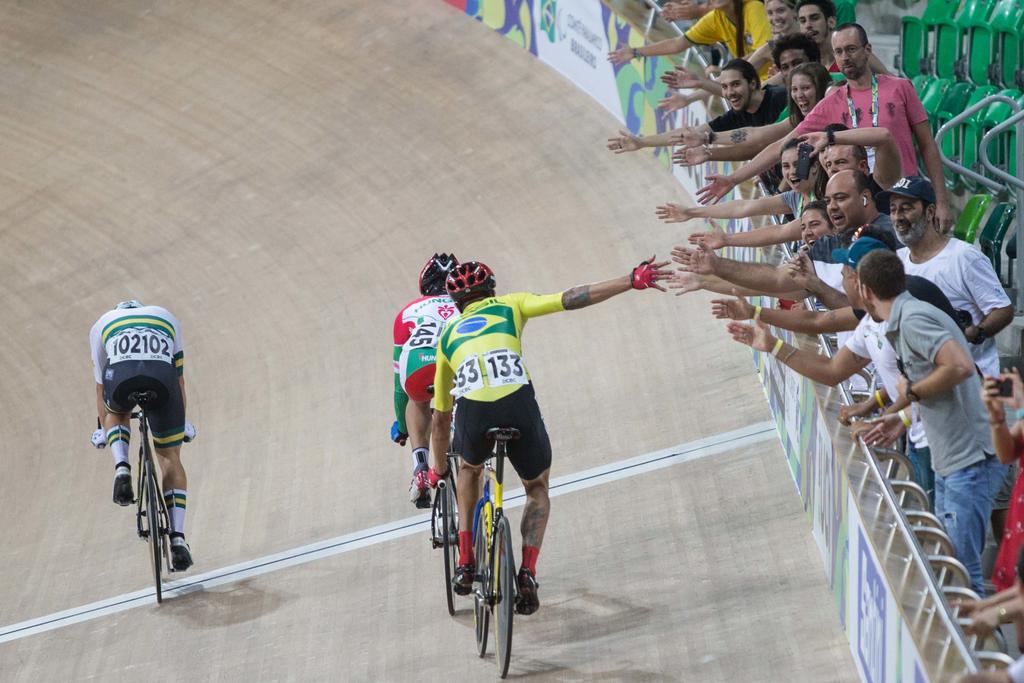


Event starts next Wednesday bringing together athletes from 39 countries
For the second time, the Rio de Janeiro Velodrome will be the home of the world’s most important paracycling tournament. The 250-meter track, which saw record-breaking performances in 2018 and became known as one of the fastest in the world, will host 287 athletes – including 25 Brazilians – aiming for the podium of the Para-Cycling Track World Championship starting next Wednesday (20th). Competitors battle not only for medals but also for the last chance to earn the points necessary to secure their spot at the Paris 2024 Paralympic Games.
Governed by the International Cycling Union (UCI) and national federations, Paracycling competitions are divided into two major disciplines: road events and track events. In road events, all categories are included, bringing together athletes with cerebral palsy, who compete on tricycles (classes T1 and T2), athletes with spinal cord injury and amputation, who compete on handbikes (classes H1 to H4), visually impaired athletes (Tandem), who compete with the support of sighted pilots, and those with some level of physical-motor disability (classes C1 to C5).
In track events, such as the World Championship, only Tandem and C Classes compete. The latter are allocated to their respective classes, from 1 to 5, through functional medical assessment. The higher the class, the lower the degree of physical-motor impairment.
In this edition, there are 218 athletes and 69 sighted pilots, a record in the competition’s history. In total, there will be 50 categories of competition – 24 female, 24 male, and two mixed. Of these, seven are Tandem class and 43 are C classes. Below are the races that will be contested at the 2024 Paracycling Track World Championship:
- Individual pursuit
In this race, two athletes start at opposite points of the track, covering a distance of 3 km (for women and men from classes C1 to C3) or 4 km (for men from Tandem, C4, and C5 classes). The winner is the one who achieves the lowest time or catches up to their opponent (i.e., when their pedal overlaps the opponent’s pedal).
Categories: Women’s Tandem, Men’s Tandem, C1 to C5 Women’s, and C1 to C5 Men’s.
- 1 km time trial
In this event, the athlete enters the track alone, and the winner is the one who completes the 1 km course in the shortest time.
Categories: Women’s Tandem, Men’s Tandem, and C1 to C5 Men’s.
- 500 m time trial
In this event, the athlete enters the track alone, and the winner is the one who completes the 500 m course in the shortest time.
Categories: C1 to C5 Women’s.
- Sprint
A short and intense race where both competitors start from the same point on the track, and the winner is the one who finishes the course first. The competition begins with a qualifying phase in which each Tandem pair tries to complete the 200 m course in the shortest time (Flying 200). The top four fastest pairs face a semifinal contested in a best-of-three format. The winners compete for gold, and the eliminated semifinalists compete for bronze.
Categories: Women’s Tandem and Men’s Tandem.
- Mixed tandem team sprint
It is a team sprint race contested on a 750 m course by Tandem teams that can be formed by men and women. Despite the name, the event is more similar to the individual pursuit than the individual sprint. Two teams (each composed of two athletes and two sighted pilots) position themselves at opposite points on the track. The team with the shortest time wins.
Category: Mixed Tandem.
- Team sprint
It is a team sprint race contested on a 750 m course (three laps) by mixed teams both in classes and genders (the same team can have men and women from different C1 to C5 classes). Each class has a different scoring system: athletes with lower levels of impairment earn more points, and a team cannot exceed 10 points, which maintains balance. Despite the name, the event is more similar to the individual pursuit than the individual sprint. Two teams of three athletes each position themselves at opposite points on the track. At the end of each lap, the leading cyclist makes way for the next cyclist in the team. The team with the shortest time wins.
Category: Mixed C Classes.
- Scratch
An individual race where cyclists start together from the same point, in a peloton, and the winner is the one who completes the course first. The men’s schedule includes 7.5 km qualifiers, if necessary, and 15 km in the final phase. The women’s schedule starts with finals, with a 10 km course.
Categories: C1 to C5 Women’s and C1 to C5 Men’s.
- Omnium
It is a combination of four races: time trial, individual pursuit, scratch, and flying 200 m. The winner is the one who scores the most points at the end. With the exception of the Flying 200, a short and intense race where the winner is the one who completes the 200 m course in the shortest time, the other points come from the races already held in their respective categories.
Categories: C1 to C5 Women’s and C1 to C5 Men’s.
- Elimination (exhibition discipline)
In this race, athletes start together in a peloton. Every two laps, the last athlete is eliminated until only two remain, who compete for first place. This race separates cyclists only by gender. Similar to the Team Sprint, there is no division by classes. In the World Championship, this discipline is held in exhibition mode – that is, it is only friendly and does not count towards a title.
Categories: C Women’s Classes and C Men’s Classes.
—
Full race schedule: click here.
Race results: click here.

